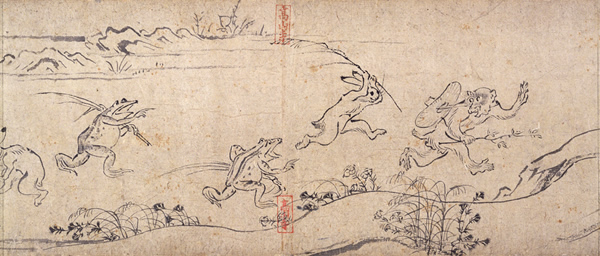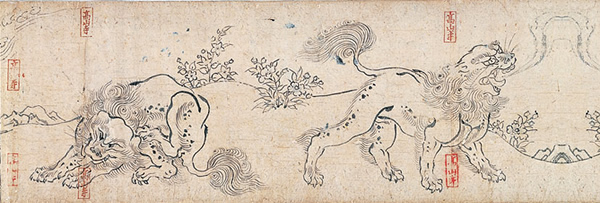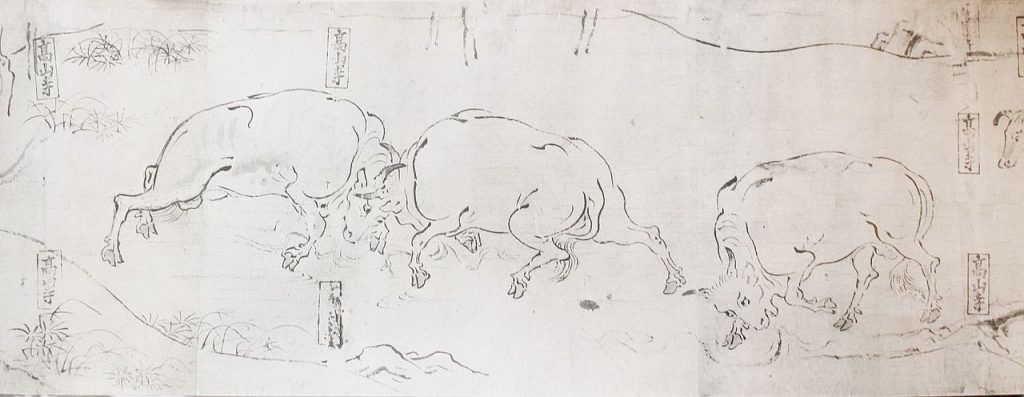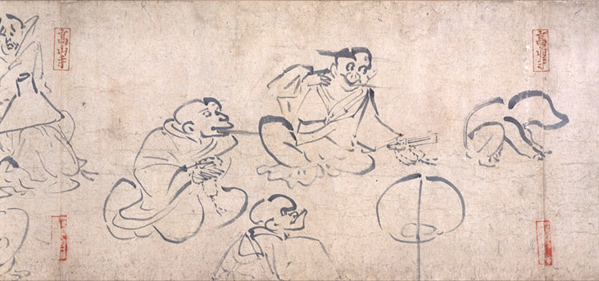Easter is around the corner. I’m sure that you see many rabbits and eggs in stores. In Durham, some rabbits are hopping around the hill college. Even in ancient Japan, rabbits could be seen in many place and there was a comic about rabbits and other animals.
Choju jinbutsu giga
Choju jinbutsu giga which means Scrolls of Frolicking Animals and Humans was painted around twelfth century or thirteenth century by unknown painters. They are sets of four picture scrolls and considered as the first comic in Japan. The story of picture scrolls goes from right to left though they do not have notes on them to explain and we have to imagine what are exactly described and what they mean. Also, the part of them are missing and it is difficult to understand everything in these paintings.
In the first scroll, the scene that many animals are playing, and their humanlike daily life were described. The main characters are frogs, rabbits and monkeys and they are anthropomorphic and walk on two legs. The custom and the state of the society were described satirically by Buddhism monks.
This painting is from the very first part of the first scroll, and rabbits and monkeys are swimming in a river.
This one shows the sumo wrestling between flogs and rabbits. On right side, a frog bites rabbit’s ear and tackles. On left side, a frog flings away a rabbit and frogs laugh. The description of them are so lively and moving of their body is painted carefully.
In this painting, the thief monkey runs away, and a rabbit and frogs try to catch it.
In the second scroll, common animals, for example, cows, chickens, dogs, eagles, hawks, and horses are painted. In addition, in the latter part, imaginary creatures or animals which were not existed in Japan at that time, for instance, water rhinoceroses (imaginary animal, Japanese who heard about rhinoceroses created them), qilin (a mythical creature appeared in Chinese literature, similar to Chimera), dragons, tapirs, lions, elephants, goats, leopards and tigers are painted. They are described realistically and naturally unlike the first scroll.
This one is cows from the second scroll. They walk in four legs and described as how they live in real life.
In the former part of the third scroll, people play instead of animals, and in the latter part, animals mimic people and play again. This one is from the former part of the third scroll and two men play tag war with their necks.
Apparently, the touch of forth scroll is different from others and impromptu. Not only playing but also the scene of the Buddhist service and annual events of the Imperial Court were painted. Three men in the middle of this painting were monks and they compete and compare their power results from their self- disciplinary training. It seems that they cast a spell on the men who turned into a frog on the right side. The lines coming out from their mouth might be a representation of the words or their power.
We cannot know the exact reason and artists who painted them, but it is sure that not only rabbits, but also other animals and natures were familiar in Japan. It is interesting that animals in these paintings have facial expression and it can be said that Japanese thought that animals have emotions like human beings. The lives of people are close to animals and nature and they can be interpreted by some paintings.









